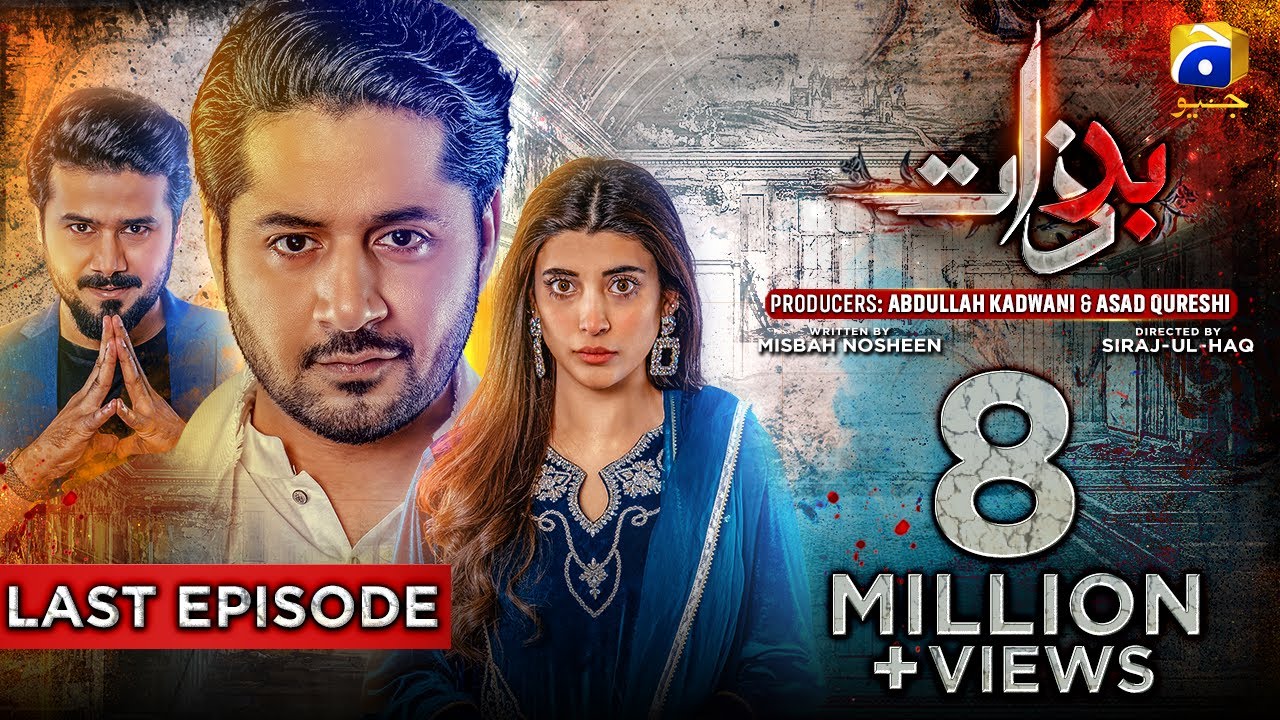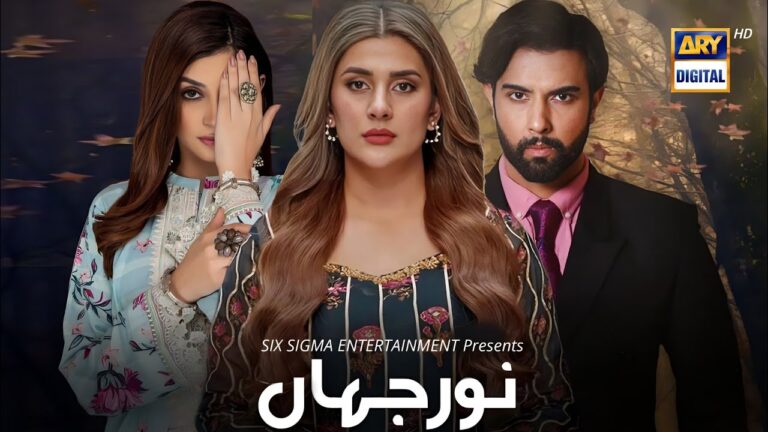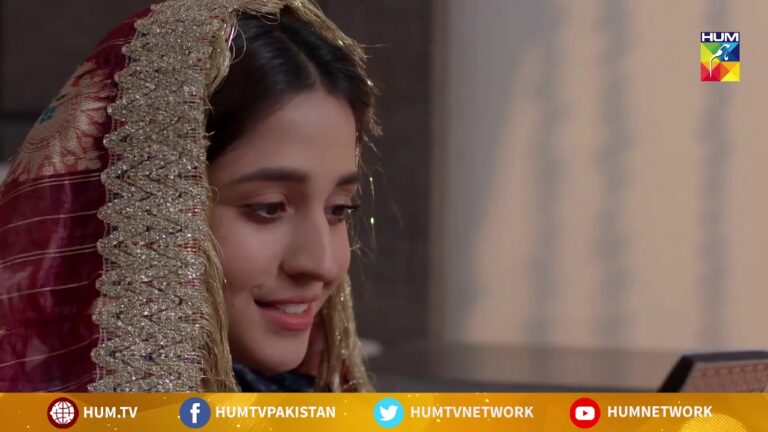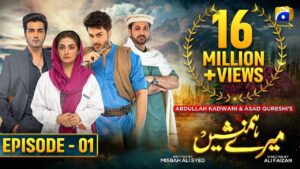Badzaat Drama Review: Badzaat, a 2019 Pakistani drama serial, takes viewers on a captivating journey through the complexities of rural life in contemporary Pakistan. It delves into sensitive social issues like feudalism, gender inequality, and honor killings, sparking a national conversation and garnering critical acclaim. This review aims to unpack the drama’s narrative, characters, and its lasting impact on Pakistani society.
A Gripping Narrative:
The story revolves around Anaarkali, a headstrong young woman trapped in the clutches of a conservative, feudalistic society. Married into a powerful family, she faces constant oppression and abuse from her in-laws, particularly her domineering brother-in-law, Murad. Anaarkali’s spirit, however, refuses to be broken. She fights for her dignity and challenges the deeply ingrained patriarchal norms that dictate her life.
The narrative unfolds through a series of conflicts that expose the harsh realities of rural Pakistan. Anaarkali’s struggles resonate with countless women who face similar challenges in a society where their voices are often silenced. The drama masterfully portrays the emotional turmoil and resilience of its characters, drawing viewers into their plights.
Compelling Characters:
Badzaat boasts a stellar cast who deliver powerful performances that breathe life into the characters. Sanam Jung, as Anaarkali, embodies the character’s strength and determination with remarkable nuance. Her portrayal of a woman battling societal constraints and seeking agency over her own life is both inspiring and heartbreaking.
Noman Ijaz, as the antagonist Murad, delivers a chilling performance that perfectly captures the arrogance and entitlement of a feudal lord. The supporting cast, including Nadia Khan and Samiya Mumtaz, also contribute significantly to the narrative, adding depth and complexity to the story.
Social Commentary and Impact:
Badzaat transcends the realm of mere entertainment by serving as a powerful social commentary. It compels viewers to confront uncomfortable truths about Pakistani society and the deeply rooted issues that plague it. The drama sparked national conversations about honor killings, domestic violence, and the importance of women’s empowerment.
It challenged traditional mindsets and ignited a movement for change. The drama’s popularity also transcended geographical boundaries, resonating with audiences across the globe who identified with the universal themes of human struggle and the fight for justice.
Beyond the Glitz:
While Badzaat garnered immense praise for its narrative and performances, it is not without its criticisms. Some viewers found the portrayal of violence and brutality to be excessive, while others felt that the ending offered an unrealistic resolution to the complex issues presented.
However, it is crucial to acknowledge that the drama’s unflinching portrayal of social issues was necessary to spark dialogue and raise awareness. It is through open discussions and critical engagement that meaningful change can be achieved.
A Lasting Legacy:
Badzaat’s legacy lies in its ability to ignite social discourse and challenge the status quo. It serves as a reminder of the ongoing fight for gender equality and social justice in Pakistan. While the drama may have concluded, the conversations it initiated continue to reverberate, paving the way for a more progressive and equitable future.
Beyond the Narrative: Exploring the Nuances of Badzaat
While the core review delves into the plot, characters, and social commentary of Badzaat, further exploration can delve deeper into specific aspects of the drama, offering a more nuanced understanding.
Behind the Scenes: The Power of Storytelling
Exploring the creative choices behind Badzaat sheds light on the power of storytelling in effecting social change. Examining the writer’s motivations, the director’s vision, and the casting decisions can provide valuable insights into the creation of a drama that resonated so deeply with audiences.
One aspect to consider is the significance of the drama’s rural setting. By choosing a backdrop outside the metropolitan areas, Badzaat throws light on the often-overlooked realities of life in rural Pakistan. This deliberate choice broadens the perspective of the narrative and compels viewers to confront the social issues prevalent in these regions.
The Soundtrack: Amplifying the Emotional Impact
The music and sound design of Badzaat play a crucial role in amplifying the emotional impact of the narrative. Analyzing the use of traditional and contemporary music, the recurring motifs, and the soundscapes employed in different scenes can reveal how these elements contribute to the overall viewing experience.
For instance, the use of melancholic tunes during scenes of oppression can evoke feelings of empathy for the characters, while more uplifting music might accompany moments of defiance or hope. Examining these choices can provide a deeper understanding of how the drama utilizes sound to shape the emotions of its viewers.
The Reception: Public Discourse and Social Change
Analyzing the public reception of Badzaat can reveal its impact on social discourse and potential contributions to social change. Examining online discussions, news articles, and audience reviews can provide insights into the various perspectives and reactions the drama generated.
It’s important to acknowledge that the drama might have sparked controversy alongside praise. Examining these opposing viewpoints can offer a more comprehensive understanding of the complex social issues tackled by the narrative and the challenges associated with effecting change.
Beyond Pakistan: Universal Themes and Global Resonance
While Badzaat is rooted in the specific context of Pakistani society, its themes resonate with audiences across the globe. Examining the drama’s international reception can reveal its ability to transcend cultural boundaries and connect with viewers on a human level.
Exploring how audiences in different countries have interpreted the themes of oppression, resilience, and the fight for justice can demonstrate the universality of the drama’s message and its potential to inspire social change on a broader scale.
By delving deeper into these aspects, one can gain a richer understanding of Badzaat’s significance and its lasting impact on Pakistani society and beyond. The drama serves as a powerful example of how storytelling can be a catalyst for social change, prompting viewers to reflect, engage in dialogue, and strive for a more just and equitable world.
In Conclusion:
Badzaat is more than just a television drama; it is a powerful social commentary that compels viewers to confront the realities of Pakistani society. Through its captivating narrative, compelling characters, and unflinching portrayal of social issues, the drama has left a lasting impact on viewers and continues to spark important conversations. While not without its criticisms, Badzaat’s contribution to social discourse and its potential to inspire change solidify its place as a significant work of Pakistani television.










+ There are no comments
Add yours